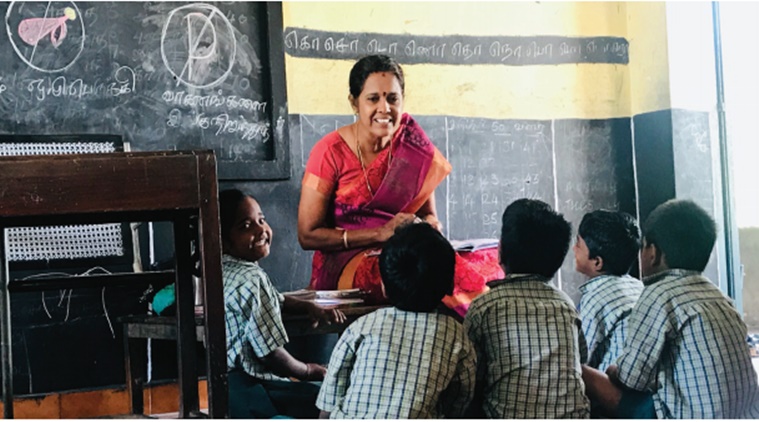 Education Policy gets a nod from Cabinet
Education Policy gets a nod from Cabinet
New Education Policy 2020 LIVE updates: The Union Cabinet on Wednesday approved the new National Education Policy (NEP) and renamed the HRD Ministry as Education Ministry. Making the announcement, Union Ministers Prakash Javadekar and Ramesh Pokhriyal Nishank said there would be a single regulator for all higher education institutions and MPhil would be discontinued.
In a bid to ramp up digital learning, a National Educational Technology Forum (NETF) would be created. “E-courses will be developed in eight regional languages initially and virtual labs will be developed,” Amit Khare, Higher Education Secretary, said.
Top 100 foreign colleges will be allowed to set-up campuses in India. According to the HRD Ministry document, listing salient features of policy, “such (foreign) universities will be given special dispensation regarding regulatory, governance, and content norms on par with other autonomous institutions of India.”
Standalone Higher Education Institutes and professional education institutes will be evolved into multi-disciplinary education. “There are over 45,000 affiliated colleges in our country. Under Graded Autonomy, Academic, Administrative and Financial Autonomy will be given to colleges, on the basis of the status of their accreditation,” he further said.
The committee — which suggested changes in the education system under the NEP — was headed by former ISRO chief K Kasturirangan. The NEP was drafted in 1986 and updated in 1992. The NEP was part of the election manifesto of the ruling Bhartiya Janta Party (BJP) ahead of the 2014 elections.
 New Education Policy to have rules on education, recruitment of teachers among other issues (Representational image)
New Education Policy to have rules on education, recruitment of teachers among other issues (Representational image)
Sanskrit will be mainstreamed with strong offerings in school - including as one of the language options in the three-language formula - as well as in higher education. Sanskrit Universities too will move towards becoming large multidisciplinary institutions of higher learning.
Under the NEP the world’s top 100 foreign universities will be “facilitated” to operate in India through a new law. According to the HRD Ministry document, listing salient features of policy, “such (foreign) universities will be given special dispensation regarding regulatory, governance, and content norms on par with other autonomous institutions of India.”
Even engineering institutions, such as IITs, will move towards more holistic and multidisciplinary education with more arts and humanities. Students of arts and humanities will aim to learn more science and all will make an effort to incorporate more vocational subjects and soft skills.
Departments in Languages, Literature, Music, Philosophy, Indology, Art, Dance, Theatre, Education, Mathematics, Statistics, Pure and Applied Sciences, Sociology, Economics, Sports, Translation and Interpretation, etc. will be established and strengthened at all higher educatio institutes.
Departments in Languages, Literature, Music, Philosophy, Indology, Art, Dance, Theatre, Education, Mathematics, Statistics, Pure and Applied Sciences, Sociology, Economics, Sports, Translation and Interpretation, etc. will be established and strengthened at all higher educatio institutes.
By 2040, all higher education institutions (HEIs) shall aim to become multidisciplinary institutions, each of which will aim to have 3,000 or more students.
Undergrad autonomy, academic, administrative, and financial autonomy will be given to colleges, on the basis of the status of their accreditation. India has over 45,000 affiliated colleges
The common Entrance exam for all higher education institutes to be held by NTA. The exam will be optional and not mandatory.
Life skills to be taught every year. Report card to have reviewed from teachers, peers, and students as well. Review assessment of performance. AI-based assessment of each year to be given to the student.
Board exams to undergo a huge change. Like mathematics for CBSE, all courses to be offered in two languages. The board exams across states to test knowledge application and not rote learning. For each subject to test objective and descriptive exam
Mathematical thinking, scientific temper to be part of course. Co-curriculum subjects like sports, vocational, arts, commerce, science, everything will be at the same level. Students can opt for courses as per choice. Students to be allowed to take up coding from class 6.
The 10+2 system will be divided into 5+3+3+4 format. The NEPchanges the school education system to 5+3+3+4 format. This means the first five years of the school will comprise of the foundation stage including three years of pre-primary school and classes 1 and class 2. The next three years will be divided into a preparatory stage from classes 3 to 5. Later three years of middle stage (classes 6 to 8), and four years of secondary stage (classes 9 to 12). Schools will not have any rigid formation of streams of arts, commerce, science, students can take up whichever courses they want.
Tech to be part of education planning, teaching, learning, assessment, teacher, school, and student training. The e-content to be available in regional languages. Starting with 8 major languages - Kannada, Odia, Bengali among others to join the e-courses available in Hindi and English.
Standalone Higher Education Institutes and professional education institutes will be evolved into multi-disciplinary education. Special education zones for disadvantaged regions. Govt to set-up a National Technology Forum to impart knowledge online.
Public investment in the education sector to reach 6% of GFP at the earliest. Currently it's around 4.43% including state and center govt.
Not just courses but universities to go multi-disciplinary. For public and private HEIs, common norms will be given. This means the fee will be fixed within the regulatory framework and no extra fee will be charged beyond the cap.
Multiple entry, exit points. MPhil to be discontinued. To pursue research, MPhil will not be allowed, All courses at ug, pg, PhD level to be interdisciplinary.
Aim to increase the gross enrolment ratio to 50% by 2035. To ensure the same, holistic, and multidisciplinary education with flexibility of subjects to be allowed.